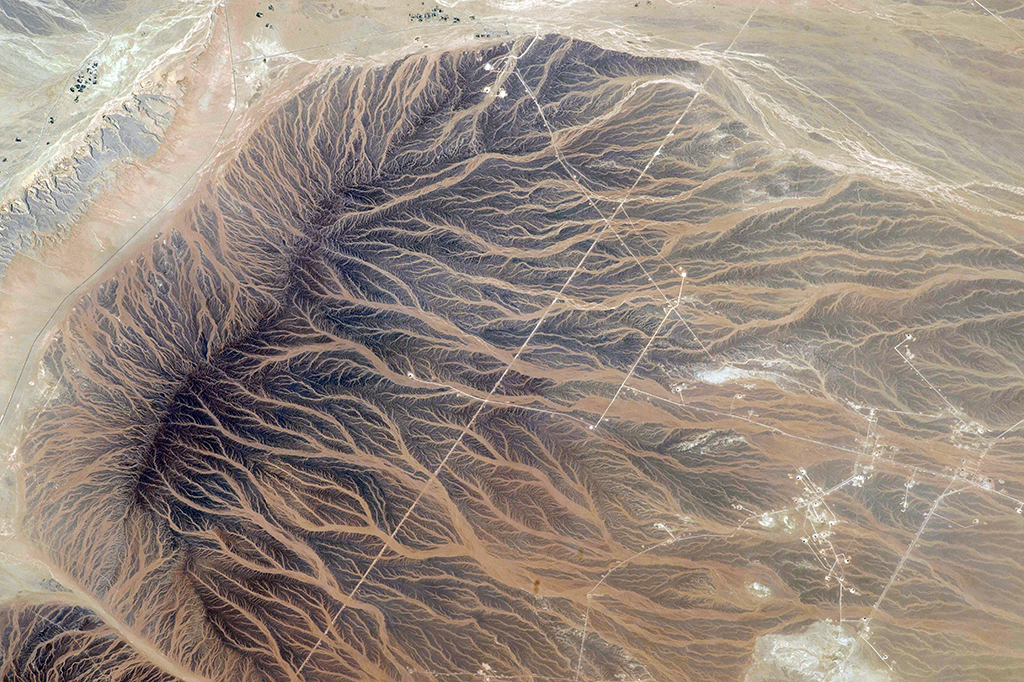
Image credit: NASA
Although my ontology is based on the work of Grosz, it builds on her work by focusing on performative action in both the discovery and communication of ideas. For example, using a sensory metaphor helped me to synthesise knowledge about my concept of wild life. For most of the project, I could sense something of the quality of wild life, even though in the early days I didn’t have a name for it. Weiser Cornell says “the felt sense … holds a space…for something not yet in words” (2005, p. 238). The following journal entry records a Focusing session. It reveals how I was able to feel into a complex problem and as Gendlin says, “come up with an answer to a complex human living question” (Gendlin 1981 cited in Weiser Cornell 1998, p. 181). It reveals how I came to experientially understand and define the wild life dynamic.
Journal Entry October 28th 2016
I notice an image of a seedling emerging from the earth. I am frustrated by this image at first because it feels regressive. Once again things are being bifurcated ie. earth and seedling. But there is something different about this embodied image. I can shift between sensing into earth and sensing into seedling but more than that I can also sense into both simultaneously, and allow the experience to be both seedling and earth simultaneously. This brings a deep breath and a shift in understanding about wild life.
Through the use of sensory metaphor, the Focusing process here helps me to embody an idea about the “co-becoming” (Grosz 2011, p. 39) of life and matter, and therefore, sense and feel into the “reciprocal insertion and intertwining of one in the other” (Merleau-Ponty 1964/1968, p. 138). This experience helped me to realise that wild life is not a thing. I kept trying to describe it in terms of its properties but it does not have properties like other things. Through this experience I came to understand wild life as a dynamic corporeal intelligence that animates things. This Focusing session gave me an experience of a something that Grosz refers to as “larger than a living being and no longer able to be controlled by an agent” (2011, p. 39). Grosz suggests that this process is a “temporary, unstable, perhaps unsustainable union of the living and the non-living, a co-becoming … in which unliving forces (an event) and living forces coalesce … for a moment … [and] lives a life of its own” (p. 39).
When I moved as the seedling, I also moved as the ground from which the seedling was emerging in a process of co-becoming. I had a visceral sense of what Merleau-Ponty might refer to as the thickness of their intertwined “continuous fabric” (1964/1968, p. 44). The deep breath came when I realised that the movement of my body was enacting this intertwining dynamic in a single performative action. The ground and the seedling were transposed into a sensorial movement that was affective and the encounter provoked a deeper level of kinaesthetic understanding. A breath, as noted in this journal entry, is often what signifies a shift in understanding during a Focusing session. Focusing encourages a process of paying attention to “something larger than the physiological processes bordered by the skin” (Weiser Cornell, 2005, p. 225). For me, this includes viscerally sensing into visual imagery as I did in this example. Attuning-to the sensory metaphor of the seedling/earth was a performative act that created a shift in lived experience and hence a shift in conceptual understanding.
An exchange between philosophy and performance has been core to my project. I have engaged with particular philosophical ideas and applied them within workshop and performance settings to access experience differently whilst engaged in artistic performance activity. Based on my investigations, my central thesis is that the relationship between lived experience and artistic creativity is performative and intertwined; that the fundamental structures of life operate in service of artistic creativity. Furthermore, my investigations have forged a particular experiential relationship between performance and philosophy that activates one form of performative philosophical expression.
